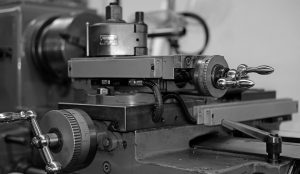
Drilling, boring and reaming and three common processes performed by manufacturing companies. All three processes involve, to some degree, creating a new hole or modifying an existing hole in a workpiece. While most people are familiar with drilling, though, many are unfamiliar with boring and reaming. In this post, we’re going to break down the differences between these three processes.
What Is Drilling?
Drilling is a cutting process that involves the use of a drill bit to cut a circular-shape hole in a workpiece. The drill bit used in drilling is a type of rotary cutting tool that, like other rotary cutting tools, rotates while subsequently scraping material out of the workpiece. To drill a workpiece, a manufacturing company must press the drill bit against the workpiece. When the drill is activated, the drill bit will dig its way into the workpiece while creating a circular-shaped hole in the process.
It’s a common assumption that drilling can only be performed on soft materials like wood. Many drilling processes do, in fact, involve wooden workpieces, but others involve workpieces made of harder materials, including metal. As long as the drill bit is harder than the workpiece, it will scrape out material to create a circular-shaped hole.
What Is Boring?
Boring is a cutting process that involves the use of a single-point cutting tool or boring head to enlarge an existing hole in a workpiece. This is in stark contrast to drilling, which is performed to create an initial hole in a workpiece.
Boring processes are typically performed using a lathe, milling machine or a horizontal boring mill. Each machine uses a different mechanism, but they are all designed to enlarge an existing hole in a workpiece — and that’s the defining characteristic of boring. While drilling is performed to create an initial hole in a workpiece, boring is performed to enlarge an existing hole in a workpiece.
What Is Reaming?
Finally, reaming is a cutting process that involves the use of a rotary cutting tool to create smooth interior walls in an existing hole in a workpiece. The rotary cutting tool used in reaming is known as a reamer. Like drill bits, reamers also remove material from the workpiece on which they are used. However, reamers remove significantly less material than drill bits. The primary purpose of reaming is simply to create smooth walls in an existing hole. Manufacturing companies perform reaming using a milling machine or drill press.
